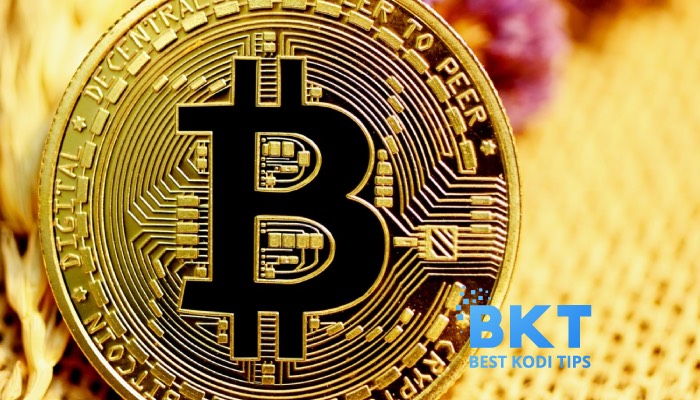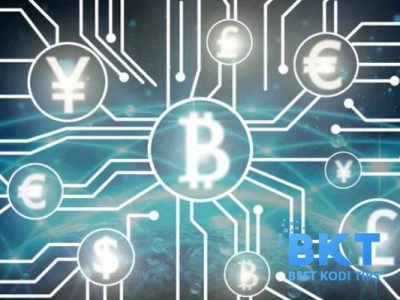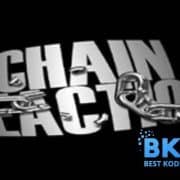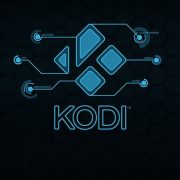Bitcoin and blockchain technology have gained significant attention in recent years due to their potential to revolutionize various industries. One area where their impact is being explored is in education. In this article, we will delve into the advantages and limitations of using Bitcoin in education and discuss how it can shape the future of learning.
Understanding Bitcoin and Blockchain Technology
Before we discuss the intersection of Bitcoin and education, it is essential to understand the basics of Bitcoin and blockchain technology.
Bitcoin is a digital currency that operates on a decentralized network, known as blockchain. Transactions are recorded on a public ledger, allowing for transparency and security. Bitcoin can be used for various purposes, including online purchases and international remittances.
The Basics of Bitcoin
Bitcoin, the first and most well-known cryptocurrency, was created in 2009 by an anonymous person or group of people using the pseudonym Satoshi Nakamoto. It was designed to be a decentralized digital currency that could be used for peer-to-peer transactions without the need for intermediaries like banks or governments.
Bitcoin operates on a technology called blockchain, which is a distributed ledger that records all transactions made with the currency. This ledger is maintained by a network of computers, known as nodes, that validate and verify each transaction. The decentralized nature of the blockchain ensures that no single entity has control over the currency, making it resistant to censorship and manipulation.
One of the key features of Bitcoin is its limited supply. There will only ever be 21 million bitcoins in existence, and this scarcity is built into the system through a process called mining. Miners use powerful computers to solve complex mathematical problems, and in return, they are rewarded with newly minted bitcoins. This process not only creates new bitcoins but also secures the network by confirming and validating transactions.
Blockchain: The Underlying Technology
Blockchain technology is the backbone of Bitcoin, but its potential goes far beyond just digital currency. At its core, a blockchain is a decentralized and transparent ledger that records transactions across multiple computers or nodes. Each transaction is grouped together in a block, and these blocks are linked together in a chain, hence the name blockchain.
One of the key advantages of blockchain technology is its immutability. Once a transaction is recorded on the blockchain, it is nearly impossible to alter or tamper with. This makes it an ideal solution for industries that require secure and transparent record-keeping, such as supply chain management, healthcare, and education.
In the education sector, blockchain technology has the potential to revolutionize how academic credentials are verified and shared. With a blockchain-based system, students can have complete control over their educational records, eliminating the need for third-party verification. This can streamline the hiring process for employers and reduce the risk of fraudulent credentials.
Furthermore, blockchain technology can also enable new models of online learning and credentialing. Smart contracts, which are self-executing contracts with the terms of the agreement directly written into code, can be used to automate the verification and issuance of digital certificates. This can make it easier for individuals to acquire new skills and credentials, opening up new opportunities for lifelong learning.
Overall, Bitcoin and blockchain technology have the potential to reshape various industries, including education. By providing transparency, security, and decentralization, they offer new possibilities for innovation and efficiency. As technology continues to evolve, it will be exciting to see how it transforms the way we learn and interact with educational systems.
The Intersection of Bitcoin and Education
Bitcoin’s integration into the education sector presents exciting opportunities for both students and institutions. Let’s explore the current use of Bitcoin in education and its potential future applications.
As Bitcoin continues to gain popularity and recognition as a legitimate form of currency, forward-thinking universities have started accepting Bitcoin as a form of payment for tuition fees. This move not only provides students with a convenient and borderless payment option but also demonstrates the institution’s willingness to embrace innovative technologies.
Furthermore, the integration of Bitcoin into the education system goes beyond payment methods. Educational platforms have emerged that offer courses specifically focused on Bitcoin and blockchain technology. These courses provide students with access to valuable knowledge about the inner workings of cryptocurrencies and the potential impact they can have on various industries.
Current Use of Bitcoin in Education
Some forward-thinking universities have started accepting Bitcoin as a form of payment for tuition fees, giving students a convenient and borderless payment option. Additionally, educational platforms have emerged that offer courses on Bitcoin and blockchain technology, providing students with access to valuable knowledge.
One of the key advantages of using Bitcoin in education is the ability to make international payments without the need for traditional banking systems. This is particularly beneficial for students studying abroad, as it eliminates the need for currency conversions and reduces transaction costs.
Moreover, the use of Bitcoin in education can also promote financial inclusion. In many countries, access to traditional banking services is limited, making it difficult for individuals to participate fully in the global economy. By accepting Bitcoin, educational institutions can provide students from underserved communities with a means to access education and participate in the digital economy.
Potential Future Applications
The potential applications of Bitcoin in education are numerous. For instance, blockchain technology can be used to verify educational credentials, prevent fraud and improve trust. This would enable employers and other educational institutions to easily verify the authenticity of a student’s qualifications, eliminating the need for time-consuming manual verification processes.
Furthermore, Bitcoin can facilitate peer-to-peer payments between students, reducing the need for intermediaries and streamlining transactions. This could revolutionize the way students pay for various services within the education system, such as textbooks, accommodation, and even peer tutoring. By eliminating the middleman, students can save on transaction fees and have more control over their financial transactions.
Another potential application of Bitcoin in education is the creation of decentralized scholarship funds. With traditional scholarship programs, there is often a lack of transparency and accountability, leading to inefficiencies and potential biases. By utilizing blockchain technology and smart contracts, scholarship funds can be created that are transparent, auditable, and accessible to a wider range of students.
In conclusion, the integration of Bitcoin into the education sector opens up a world of possibilities. From providing students with a convenient and borderless payment option to revolutionizing the way educational credentials are verified, Bitcoin has the potential to transform the education landscape. As the technology continues to evolve, it will be fascinating to see how Bitcoin shapes the future of education.
While Bitcoin’s potential in educational settings primarily revolves around payment systems, fundraising, and transparency, the underlying technology paves the way for advanced financial studies. Specifically, Oil Profit emerges as a topic of interest for finance and tech students. By combining the intricacies of quantum mechanics with state-of-the-art artificial intelligence, this method delivers unparalleled market insights. Educators and students alike admire Oil profit’s prowess, viewing it as an exemplar of how cryptocurrency technology can extend beyond basic transactions and into sophisticated analytical realms.
Advantages of Using Bitcoin in Education
Bitcoin’s integration into education brings various advantages that contribute to a more secure, inclusive, and financially literate learning environment.
Enhanced Security and Transparency
Bitcoin transactions are recorded on the blockchain, making them highly secure and transparent. This eliminates the risk of fraud and ensures that financial records are easily accessible and auditable. Additionally, the decentralized nature of Bitcoin reduces the vulnerability to hacking and data breaches.
Global Accessibility and Inclusion
Bitcoin provides students with a global payment solution, cutting across geographical boundaries and eliminating the need for traditional banking systems. This enables students from disadvantaged regions to access educational resources and participate in the global learning community.
Encouraging Financial Literacy
By incorporating Bitcoin into educational curricula, students gain a practical understanding of digital currencies and financial technology. This enhances their financial literacy and prepares them for the evolving digital economy.
Limitations and Challenges of Bitcoin in Education
While Bitcoin offers numerous advantages, it also faces limitations and challenges that need to be addressed before widespread adoption in education.
Volatility and Security Concerns
The value of Bitcoin is highly volatile, which presents a challenge for educational institutions that rely on stable currencies. Additionally, security concerns, such as the potential for theft and hacking, must be adequately addressed to ensure the safety of students’ funds.
Technological Barriers and Learning Curve
The integration of Bitcoin into education requires technological infrastructure and expertise. Institutions may need to invest in the necessary resources and provide training to educators and students. This poses a barrier for adoption, particularly for institutions with limited resources.
Regulatory and Legal Implications
The regulatory landscape surrounding Bitcoin is still evolving. Educational institutions must navigate legal frameworks and comply with regulations to ensure the legality of accepting Bitcoin and managing digital currencies in an educational setting.
Overcoming the Challenges: Possible Solutions
To fully harness the potential of Bitcoin in education, we need to address the challenges it poses. Here are some possible solutions:
Educational Initiatives and Training
By investing in educational initiatives and training programs, institutions can equip educators and students with the necessary knowledge and skills to embrace Bitcoin. This includes training on blockchain technology, financial security, and responsible digital currency management.
Technological Advancements and Innovations
Continued technological advancements and innovations can simplify the integration process of Bitcoin into educational institutions. User-friendly platforms and applications can be developed to enhance accessibility and usability, making Bitcoin more accessible to students and educators alike.
In conclusion, Bitcoin has the potential to transform education by offering enhanced security, global accessibility, and financial literacy. However, challenges such as volatility, technological barriers, and regulatory implications need to be overcome. By exploring possible solutions and embracing Bitcoin responsibly, we can explore its advantages and limitations to shape the future of education.













Comments